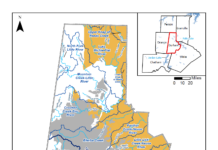Regardless of the size of the developer or any other kind of company or governmental entity that has an environmental compliance program, the success of the program depends on support from upper management, knowledgeable staff and proper planning.
An environmental compliance program is a set of procedures and practices a company uses to maintain compliance with applicable environmental laws and regulations. Support from upper management is crucial because the culture of an organization comes from the top down. Knowledgeable staff for the job ensures that someone is available to help navigate the local, regional and federal regulations so that the project’s compliance program can succeed. Proper planning plays a significant role in the success of a compliance program to allow the best use of resources available for the project.
Support from upper management is pivotal in the success of an environmental compliance program. Generally, an organization’s culture reflects the values of the management team, so if the management team values compliance, the rest of the team will follow. This starts with the top tier of the company’s leadership as they will build a team that is well equipped to have a successful environmental compliance program.
Often you can spot environmental compliance programs that are not effective because the responsible party involved with the project either explicitly states their intentions to do no more than what is required or implies through their actions that complying with the regulations are less important than project costs or timelines. In many states, there are additional requirements from the county or city in which the project is located. Simply meeting the city requirements does not always mean that county, state and federal requirements are met.
A supportive upper management team is also aware of what equipment and other resources the team needs. The management team understands the need for and benefit of proper training and having qualified personnel implement the compliance program. Management provides for the appropriate project budget to stay in compliance with federal, state and city/county requirements.
The best staff for the job are personnel who hold certifications, have experience or are willing to learn. An experienced compliance program manager understands what is needed for the execution of the project while maintaining compliance with environmental regulations. This individual can either be an employee or a contracted consultant. If the individual is inexperienced, but is someone with a willingness to learn, the program can still be successful. Those individuals proactively research local and regional regulations to see what applies to the project. They also are able to easily determine when to reach out to their network and call in more experienced personnel.
Proper Planning Critical
An important trait of successful environmental compliance programs is proper planning that results in a project with an adequate budget to implement preventative measures and the capacity to handle changing conditions. Most importantly, planning enables the effective use of time and money to resolve whatever issues the project may encounter.
If the project does not have adequate funding budgeted for environmental compliance, the managers of the project won’t be able to adequately cover the necessary requirements. Project management should account for installation of best management practices (BMP), maintenance, removal, ongoing monitoring, continuous training and appropriate staff or consultants.
Proactive planning to identify and implement preventative measures, such as stabilizing inactive areas of soil or disturbed soil regularly, allows for the anticipation of weather events to minimize erosion. If sites do not have the proper preventative measures in place, this can cause slope failures that may impact infrastructure. These types of failures result in an added cost to expenses for repairs and thus an increase to the project’s budget. Preventative measures also allow for installation of necessary sediment controls, which not only prevents the need for repairs but also minimizes sediment discharge potential.
Contingency plans are important for situations when unexpected events occur, such as frack out from boring activities to a drainage way or an unforeseen storm event prior to site stabilization. When these unanticipated events happen, a properly prepared site project team knows how to deal with those events. A team that does not know how to deal with unanticipated events can cause increased project costs and ineffective solutions to be implemented. For example, an unqualified individual may stack BMPs on top of each other instead of going back to the designer to request a more effective or appropriate solution in the event of continual BMP failures.
Looking at the bigger picture is always important when planning for environmental compliance. This allows a team to discuss what steps are needed to obtain, maintain and close required environmental permits from the start of the project so if expensive items are not already planned into the budget, time is allowed to determine alternative solutions or to find a way to increase or reallocate budget for those items. This early planning also allows time for the project team to consult with experts in those fields prior to last-minute design changes and implementations. This can save on the overall cost of a project.
While there are many factors that go into having a successful environmental compliance program, supportive management, knowledgeable personnel and proper planning can all greatly impact the effectiveness of the environmental compliance program. If the management team does not see value in environmental compliance, staff are unaware of requirements and/or a program has not planned properly to comply with regulations, the program will fail. It is important to have all these components working as a team at a minimum to have a successful environmental compliance program.
About the Expert
Sarah M. Haggard, CPESC, QSD, QSP is President of Deluge Consulting, Inc. Sarah has been in the erosion and sediment control industry since 2005 and has provided environmental compliance assistance for various types of industrial facilities and construction projects including renewable energy, residential, commercial and petroleum.












